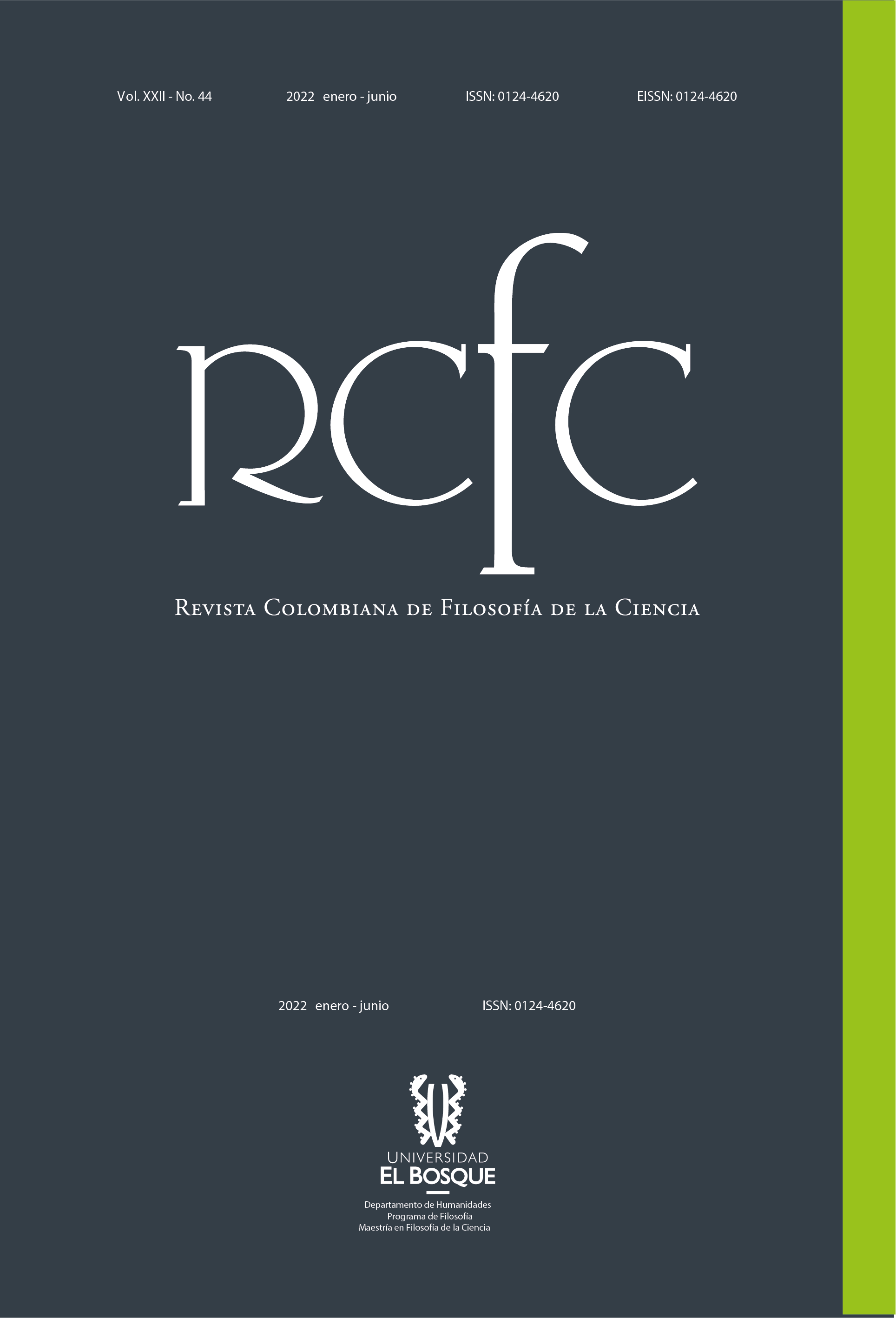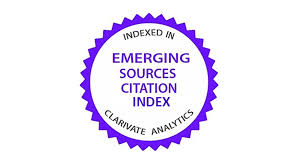The Relevance of the Invariance Under Time-Reversal to the Arrow of Time
DOI:
https://doi.org/10.18270/rcfc.v22i44.3524Keywords:
arrow of time, time-reversal invariance, space-time, time-orientability, global time, time symmetry, four-dimensional energy flowAbstract
In this article is it argued that the existence of physical laws that are invariant under time-reversal is not an indispensable condition for the existence of the arrow of time. Such an arrow can be defined as a global and geometric property of space-time, which neither is based on entropic considerations nor requires the existence of time-reversal invariant laws. In turn, if the space-time satisfies certain conditions, the global arrow can be transferred to the local contexts as a four-dimensional energy flow that points to the same time direction in all space-time points.
Downloads
References
Aiello, Matías, Castagnino, Mario & Lombardi, Olimpia. “The arrow of time: From universe time-asymmetry to local irreversible processes”. Foundations of Physics 38 (2008): 257-292.
Albert, David. Time and chance. Cambridge, MA: Harvard University Press, 2000.
Callender, Craig. “Is time ‘handed’ in a quantum world?”. Proceedings of the Aristotelian Society 100 (2000): 247-269.
Castagnino, Mario, Gadella, Manuel & Lombardi, Olimpia. “Time’s arrow and irreversibility in time-asymmetric quantum mechanics”. International Studies in the Philosophy of Science 19 (2005): 223-243.
Castagnino, Mario, Lara, Luis & Lombardi, Olimpia. “The cosmological origin of time-asymmetry”. Classical and Quantum Gravity 20 (2003a): 369-391.
Castagnino, Mario, Lara, Luis & Lombardi, Olimpia. “The direction of time: From the global arrow to the local arrow”. International Journal of Theoretical Physics 42 (2003b): 2487-2504.
Castagnino, Mario & Lombardi, Olimpia. “The generic nature of the global and non-entropic arrow of time and the double role of the energy-momentum tensor”. Journal of Physics 37 (2004): 4445-4463.
Castagnino, Mario & Lombardi, Olimpia. “A global and non entropic approach to the problem of the arrow of time”. Spacetime physics research trends. Horizons in world physics, editado por Albert Reimer. Nueva York: Nova Science, 2005, pp. 73-108.
Castagnino, Mario & Lombardi, Olimpia. “The global non-entropic arrow of time: From global geometrical asymmetry to local energy flow”. Synthese 169 (2009): 1-25.
Castagnino, Mario, Lombardi, Olimpia & Lara, Luis. “The global arrow of time as a geometrical property of the universe”. Foundations of Physics 33 (2003): 877-912.
Costa de Beauregard, Oliver. “CPT invariance and interpretation of quantum mechanics”. Foundations of Physics 10 (1980): 513-530.
Curiel, Eric. “A primer on energy conditions”. Towards a theory of spacetime theories, editado por Dennis Lehmkuhl, Gregor Schiemann y Erhard Scholz. Basel: Springer, 2017, pp. 43-104.
Dürr, Detlef & Teufel, Stefan. Bohmian mechanics. The physics and mathematics of quantum theory. Dordrecht: Springer, 2009.
Earman, John. “An attempt to add a little direction to «the problem of the direction of time»”. Philosophy of Science 41 (1974): 15-47.
_______. “The problem of irreversibility”. Proceedings of the Biennial Meeting of the Philosophy of Science Association 1986, Vol. 2, editado por Andrea Woody. Chicago: Philosophy of Science Association, 1986, pp. 226-233.
_______. “What time reversal invariance is and why it matters”. International Studies in the Philosophy of Science 16 (2002): 245-264.
Earman, John & Norton, John. “What price spacetime substantivalism? The hole story”. The British Journal for the Philosophy of Science 38 (1987): 515-525.
Ehrenfest, Paul & Ehrenfest, Tatiana. The conceptual foundations of the statistical approach in mechanics, 1912. Ithaca: Cornell University Press, 1959.
Gasiorowicz, Stephen. Elementary particle physics. Nueva York: John Wiley and Sons, 1966.
Hawking, Stephen & Ellis, George. The large scale structure of space-time. Cambridge: Cambridge University Press, 1973.
López, Cristian. “Three facets of time-reversal symmetry”. European Journal for Philosophy of Science 11 (2021): 1-19.
López, Cristian & Lombardi, Olimpia. “Space-time symmetries in quantum mechanics”. Quantum worlds. Perspectives on the ontology of quantum mechanics, editado por Olimpia Lombardi, Sebastian Fortin, Cristian López & Federico Holik. Cambridge: Cambridge University Press, 2019, pp. 269-293.
Matthews, Geoffrey. “Time’s arrow and the structure of spacetime”. Philosophy of Science 46 (1979): 82-97.
North, Jill. “Two views on time reversal”. Philosophy of Science 75 (2009): 201-223.
Peterson, Daniel. “Prospect for a new account of time reversal”. Studies in History and Philosophy of Modern Physics 49 (2015): 42-56.
Popper, Karl. Nature 177 (1956a): 538.
_______. Nature 178 (1956b): 382.
_______. Nature 179 (1957): 1297.
_______. Nature 181 (1958): 402.
_______. Nature 207 (1965): 233.
_______. Nature 213 (1967a): 320.
_______. Nature 214 (1967b): 322.
Price, Huw. Time’s arrow and Archimedes’ point: New directions for the physics of time. Oxford: Oxford University Press, 1996.
Racah, Giulio. “Sulla simmetria tra particelle e antiparticelle”. Il Nuovo Cimento 14 (1937): 322-326.
Roberts, Bryan W. “Three myths about time reversal invariance”. Philosophy of Science 84 (2017): 315-334.
Sachs, Robert G. The physics of time reversal. Londres: University Chicago Press, 1987.
Sakurai, Jun John. Modern quantum mechanics. Revised edition. Reading, MA: Addison- Wesley, 1994.
Savitt, Steven F. “The direction of time”. The British Journal for the Philosophy of Science 47 (1996): 347-370.
Sklar, Lawrence. Physics and chance. Cambridge: Cambridge University Press, 1993.
Schutz, Bernard F. Geometrical methods of mathematical physics. Cambridge: Cambridge University Press, 1980.
Visser, Matt. Lorentzian wormholes. Berlin: Springer-Verlag, 1996.
Watanabe, Satosi. “Symmetry of physical laws. Part 3: Prediction and retrodiction”. Reviews of Modern Physics 27 (1955): 179-186.
Downloads
Published
How to Cite
Issue
Section
License

This work is licensed under a Creative Commons Attribution-NonCommercial-NoDerivatives 4.0 International License.

| Article metrics | |
|---|---|
| Abstract views | |
| Galley vies | |
| PDF Views | |
| HTML views | |
| Other views | |











